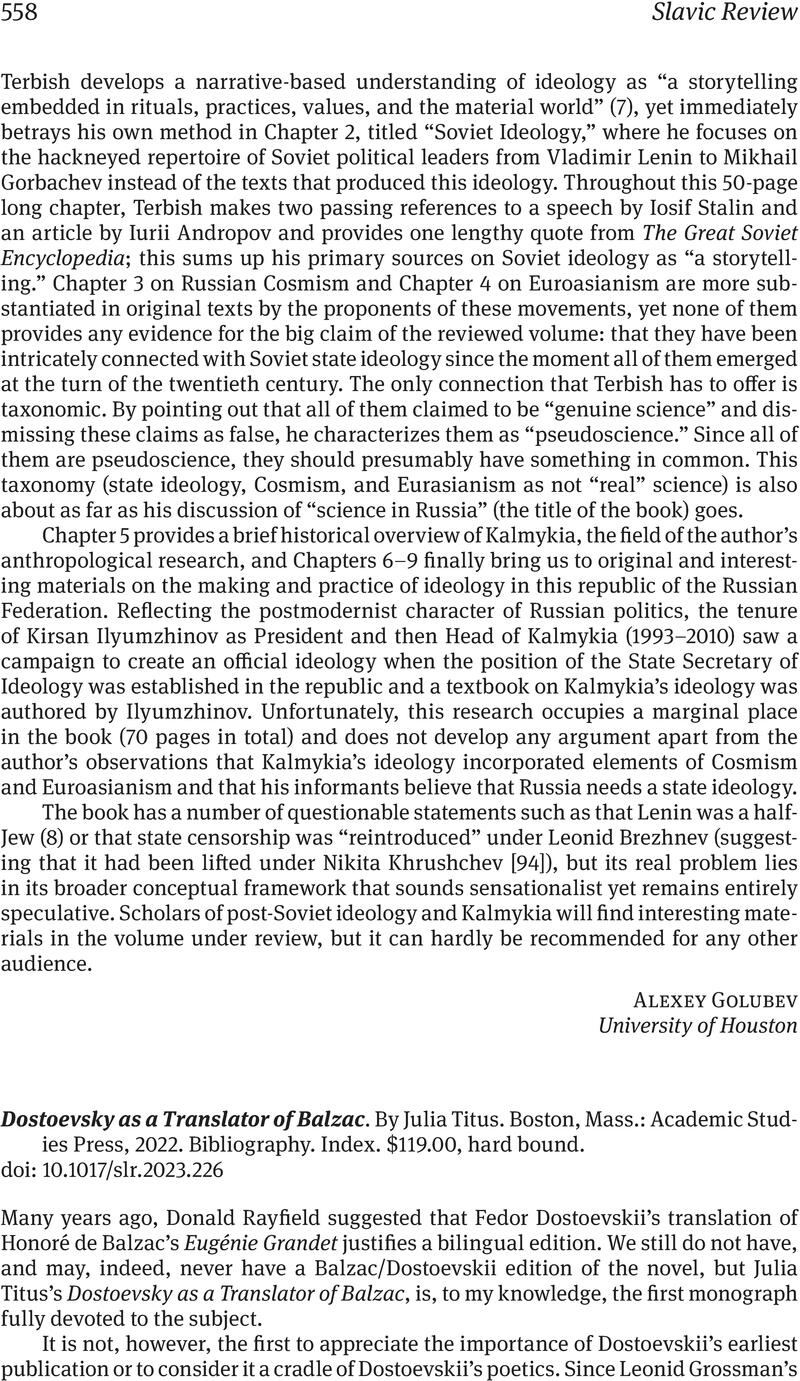No CrossRef data available.
Article contents
Dostoevsky as a Translator of Balzac. By Julia Titus. Boston, Mass.: Academic Studies Press, 2022. Bibliography. Index. $119.00, hard bound.
Review products
Dostoevsky as a Translator of Balzac. By Julia Titus. Boston, Mass.: Academic Studies Press, 2022. Bibliography. Index. $119.00, hard bound.
Published online by Cambridge University Press: 01 November 2023
Abstract
An abstract is not available for this content so a preview has been provided. Please use the Get access link above for information on how to access this content.

- Type
- Book Review
- Information
- Copyright
- Copyright © The Author(s), 2023. Published by Cambridge University Press on behalf of the Association for Slavic, East European, and Eurasian Studies


